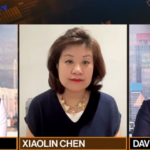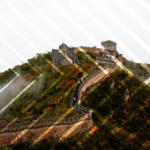Not if, but when – A breakdown of MSCI’s decision on China’s onshore equity market
& reasons to invest in the onshore markets today.
Executive Summary
- On June 9th, MSCI stated that onshore Chinese equities will be added to their broad-based international indices.
- We believe investors should consider taking a position in the onshore markets today as international investment increases and China implements policies to sustain the onshore market rally.
- Three issues need to be resolved before immediate inclusion can take place.
MSCI, a leading provider of index solutions globally, announced on Tuesday, June 9th that onshore Chinese equities will be added to their broad-based international indices upon the resolution of three outstanding issues. We previously wrote about the potential impact of this inclusion. As an MSCI client, KraneShares, along with several dozen mutual fund families and institutional brokers, attended MSCI’s Index Review Seminar, which was held the morning after the announcement. MSCI’s message at the seminar was clear; investors need to proactively prepare for the coming changes.
We have two funds for investors looking to gain exposure to the onshore Chinese markets before inclusion begins:
The KraneShares Bosera MSCI China A ETF (ticker KBA) is the only U.S.-listed China A-share ETF to track an MSCI Index1: KBA holds the exact onshore Chinese securities that will be included into MSCI’s international indices.
The KraneShares FTSE Emerging Markets Plus ETF (ticker KEMP) KEMP offers exposure to the onshore markets as part of a broad emerging market strategy.
Changes like the one MSCI announced on June 9th are rare, but when they happen they have historically driven performance in the affected economies. For example, in 2012 MSCI announced that it would include the United Arab Emirates (UAE) in its emerging market index between 2012 and 2014; when the UAE’s inclusion was implemented, the MSCI United Arab Emirates IMI Index rose 238%2. This dwarfs the 130% rise the onshore Chinese markets have achieved since the rally began in the second quarter of 20143. We believe the onshore markets still have room to grow. Beyond MSCI’s decision, the recent surge in China’s onshore markets is backed by meticulous structural developments that have been decades in the making. We have listed a few examples of these developments below:
Raising Domestic Consumption
China’s policy makers are prioritizing increased domestic consumption in order to alleviate export dependency to the European Union and United States. Evidence of the policy’s success can be seen in China’s Year over Year retail sales data. According to China’s National Bureau of Statistics, retail sales in May increased 10.1% to $390 billion. The numbers indicate that China is catching up to well-established domestic markets like the United States. Additionally, the strong stock market has a trickle-down wealth effect on domestic consumption allowing Chinese investors to spend more freely.
Stock Investing Replaces Housing
China’s household savings rate is the third highest in the world at 51% of its GDP4. This rate is 300% higher than that of the United States5. Due to limited investment options in China, housing has traditionally been one of the most popular investment vehicles for Mainland Chinese citizens, which in return supported China’s urbanization policy. With housing softening, savings are finding a new home in the stock market. In fact, 4.4 million new onshore brokerage accounts have been opened by Chinese investors this year6.
Monetary Policy
China’s central bank has started to ease monetary policy. There have been two interest rate cuts and several adjustments to the reserve requirement ratio, which is the minimum amount of customer deposits that commercial banks must hold in reserve before making loans. The reserve requirement ratio was cut to 19.5% this year from 20% in 20147. More bank requirement cuts and targeted monetary policy are likely as policy makers continue to support growth. However, we do not believe that there will be more interest rate cuts because China’s leadership wants to keep the renminbi (RMB) stable ahead of the International Monetary Fund’s decision on the RMB’s inclusion into its basket of reserve currencies.
Unlocking Shareholder Value in State Owned Enterprise
Historically, China’s state owned enterprises (SOEs) have been undervalued compared to their privately owned counterparts. Unlocking shareholder value in state owned enterprises is a top policy in China today. This will take the form of increased mergers and acquisitions like the recent merger of China South Railroad with China North Railroad to form CRRC, one of the largest train manufacturers globally. Removing inefficiencies should raise the return on equity for State Owned Enterprises versus their private equivalents. We envision reform to heavily emphasize traditional sectors including industrials, basic materials and energy.
One Belt, One Road
Recently, China implemented the One Belt, One Road policy, which links Chinese manufacturers to Europe, Asia, Africa and the Middle East through improved overland transportation linkages and maritime port and logistic facilities. This spearheaded the launch of the Asia Infrastructure Investment Bank (AIIB) to help finance this policy.
Debt Deleveraging
China heavily restricted Initial Public Offerings and secondary offerings in the onshore markets for several years. Chinese companies had to rely on issuing debt to raise capital due to this limiting environment. The strong performance of the stock market allows new companies to list and for legacy companies to issue new shares. Proceeds can be used to pay down debt.
The MSCI decision overview
As the inclusion of the onshore market into MSCI broad indices has become a matter of when not if, China’s leadership is preparing its economy for massive inflows of foreign capital. Currently, China’s Securities Regulatory Commission (CSRC) is working with MSCI to address the three pending issues. The issues center around the programs China implemented in order to phase in the opening up of its economy. China has tightly regulated quota systems to allow foreign investors access to its onshore markets. The first program China launched was the Qualified Foreign Institutional Investor program (QFII), which gives specific foreign institutions access to the onshore markets. The second program to launch was the Renminbi Qualified Foreign Institutional Investor Program (RQFII), which is issued primarily to Chinese asset managers, and has been the catalyst for the launch of onshore China funds like the KraneShares Bosera MSCI China A Share ETF (ticker KBA).
China is gradually shifting focus from the QFII and RQFII programs in favor of even more accessible “connect” programs. The first connect program to go live was the Shanghai-Hong Kong Stock Connect that linked the Shanghai Stock Exchange to the fully internationally accessible Hong Kong Stock Exchange. We believe the Shenzhen-Hong Kong Stock Connect program should follow soon, which will make the entire onshore market fully accessible to international investors.
The three issues:
- Quota Allocation Process: In its announcement MSCI stated that QFII and RQFII quota is still an issue because: “Large investors should be given access to quota commensurate with the size of their assets.”8 We believe this issue will be settled in the near future because quota restrictions are consistently being loosened.
- Capital Mobility Restrictions: The Shanghai-Hong Kong Stock Connect has a daily limit on the amount of stocks that can be purchased, which, if reached, could leave managers without access. MSCI would like to see this limit removed. Additionally the QFII program has a weekly redemption window, which MSCI would like to see increased to a daily window.
- Beneficial Ownership: Unlike ETFs and mutual funds, investors in separate managed accounts own the actual underlying securities held by their custodian. MSCI wants to ensure that investors with separate accounts are confident in their ownership in Chinese stock.
Before the June 9th announcement there were lingering questions around how the onshore markets would be phased in. MSCI clarified that initially 5% of the onshore Chinese equities’ free float market cap would be included into their broad indices and that this weight will be increased incrementally. At full inclusion, China’s weight within MSCI Emerging Markets would be 43.6% overall, 20.3% Hong Kong listed companies, 20.5% onshore Chinese companies, and 2.8% U.S.-listed companies9. An incremental increase of onshore equities within broader indices is a logical strategy based on the large amount of money needing to be reallocated.
We previously wrote about how the lack of a formal announcement on the Shenzhen-Hong Kong Stock Connect program could be problematic for inclusion. We suspect an official announcement about the launch of this program in the next several months. Ultimately the impediments are coming down as MSCI calls the launch of the Shenzhen–Connect program “imminent” and believes “further liberalization of the RQFII program”8 is coming.
China's leadership is motivated to continue opening up its economy to international investors. Having China's onshore markets included into international indices helps bolster this goal. We believe investors should consider taking a position in the onshore China markets today as their inclusion within broad MSCI indices – and the accompanying international fund flows – are imminent and China is enacting policies to sustain the onshore market rally.
- Source for KBA being the only ETF with onshore exposure to track an MSCI index ETF – ETF Trends, “What Would A-Shares Look Like in Broad EM ETF? The Answer Already Exists” 6/3/2015
- Return based off the MSCI United Arab Emirates IMI Index from January 2012 to May 2014. Definition: The MSCI United Arab Emirates Investable Market Index (IMI) is designed to measure the performance of the large, mid, and small cap segments of the UAE markets. With 22 constituents, the index covers approximately 85% of the UAE equity universe.
- Return based of the MSCI China A International Index from start of market rally 3/1/2014 through 5/31/2015. MSCI China A International Index Definition: The MSCI China A International Index captures large and mid-cap representation and includes the China A-share constituents of the MSCI China All Shares Index. It is based on the concept of the integrated MSCI China equity universe with China A-shares included.
- Source: World Bank as of 2013
- Source: World Bank as of 2013
- Source: China Securities Depository and Clearing Corporation as of 5/2015
- Source: CEIC Data as of 2/5/2015
- Source for quote – MSCI, “Results of MSCI 2015 Market Classification Review” 6/9/2015
- MSCI as of 6/2015


















